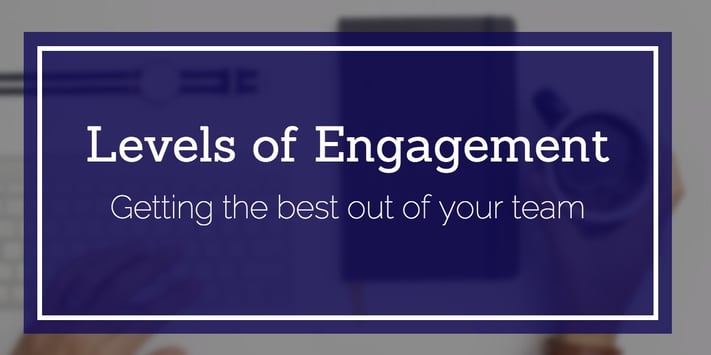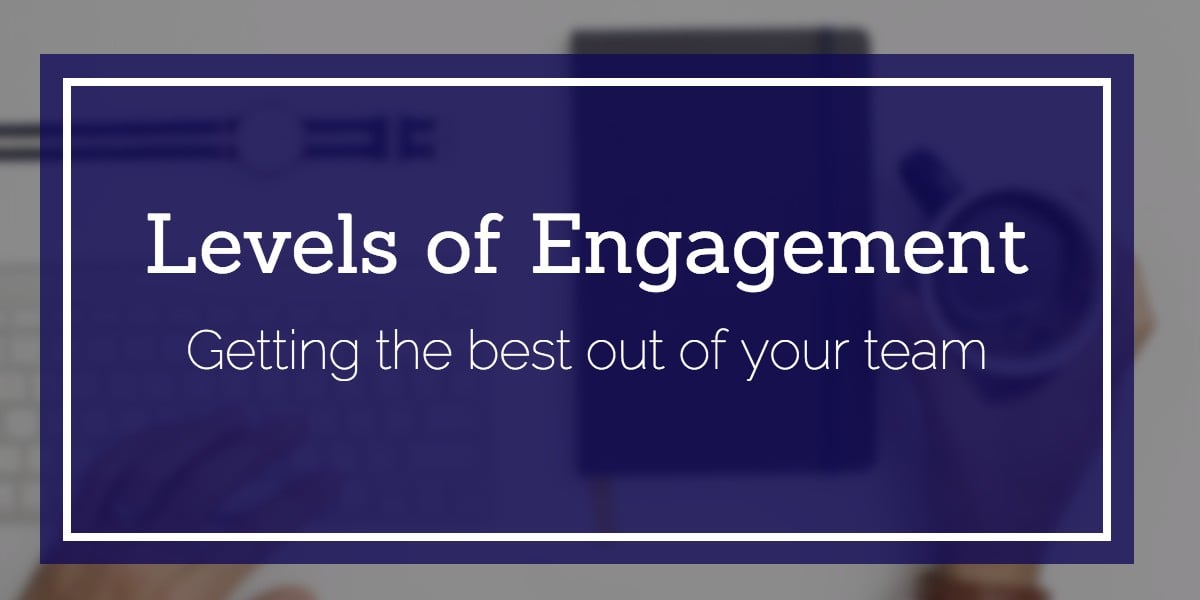
Creating a highly engaged workforce has been a longtime goal for many organizations, as engaged employees are deeply committed to achieving critical company goals. However, understanding what it takes to engage employees can be challenging. There is an entire spectrum of engagement—from fully engaged to actively disengaged—and it can be difficult to meet employees where they are.
Moreover, at each of these levels, employees respond to different drivers of engagement. However, once you understand the various levels of engagement, you can get closer to understanding what it will take to build a more committed, productive workforce.
What Is Engagement?
Employee engagement is the emotional connection employees have to your organization and its goals. When employees are committed to the organization and their work, they are compelled to give their best effort.
Employee engagement is not merely a level of satisfaction, as studies show that employees can be satisfied with their jobs but only moderately engaged. In fact, it’s possible to have satisfied employees—happy to show up to work every day for years—who are not at all engaged in their work. Even companies with all the fun perks imaginable (e.g., casual dress codes, happy hours, or catered meals) have plenty of disengaged employees.
Instead, engagement is an attitude. It describes a level of enthusiasm that encourages people to go above and beyond what is expected and achieve the best possible results.
The Levels of Engagement
There is no secret sauce for creating engagement in your workforce, and it is a challenge for many employers. According to research from Gallup, only 36 percent of employees are actively engaged, whereas the rest are either not engaged (51 percent) or actively disengaged (13 percent)—meaning they are miserable at work and spreading their misery to coworkers around them.
Therefore, before you can take steps to improve engagement, it’s critical to understand where employees are and what typifies the different levels of engagement:
Fully Engaged
When your employees are fully engaged, they possess more than just the mindset to do great work. They also achieve results that can make a difference for your organization. Another Gallup study found that engaged employees deliver a range of benefits that enhance company growth, such as reduced turnover, higher productivity, and more satisfied customers.
Engaged employees also put forth discretionary effort to meet company goals, meaning they are willing to go the extra mile to do their best work. Fortunately, engagement and the desire to commit discretionary effort are contagious. For example, when company leaders are engaged, they boost engagement throughout their team. In fact, research conducted by Zenger Folkman found that engaged managers are more likely to have engaged direct reports.
Not Engaged
Disengaged employees—which potentially represent just over half of your workforce according to Gallup—possess neither overwhelmingly positive nor negative feelings about their work. They are present, but they don’t give extra, discretionary effort to take their contribution to the next level.
This disengaged segment of your workforce poses a risk to organizational success because they don’t do their best work and are more likely to leave the organization, either voluntarily or involuntarily. And this does not just impact poor performers—top performers can also be disengaged and present a flight risk. As one HR consultant told HRDive, “Top performers leave when the organization fails to deliver an experience that motivates them, engages them, and aligns their personal and professional aspirations.”
Actively Disengaged
Though actively disengaged employees typically represent a smaller portion of the workforce, they can exert an overwhelmingly negative influence. These employees voice their negative opinions and attitudes about the workplace, undermining any morale in their coworkers. They may leave on their own, but more often they need to be removed from the organization.
Ways to Build Engagement in Your Workforce
Although certain factors are more likely to influence certain employees, there are some general actions you can take to move all of them forward in the engagement spectrum. For example, you can take the following steps:
Cultivate Strong Communication and Relationships
A study in the Journal of Business and Management found that employees reporting positive relationships with coworkers were more likely to be engaged. By offering opportunities for employees to communicate with others and build strong relationships in the workplace, you can support their sense of belonging and boost engagement.
Offer Opportunities for Learning and Development
When employees have access to opportunities for growth, they may feel more engaged and less likely to look elsewhere for professional development. In a study conducted by Udemy, 80 percent of employees said learning and development opportunities would help them feel more engaged on the job.
Provide Recognition for Contributions
Recognizing employee contributions—whether through pay, praise, or small tokens of thanks—can increase their engagement. A study reported in the Harvard Business Review found that employees who received recognition—just a simple letter of thanks from a supervisor—experienced higher intrinsic motivation, performance, and retention.
Ask for Comprehensive Feedback
The best way to understand what keeps employees engaged and how engagement could be improved is to ask. Employee surveys, exit interviews, and online reviews of your organization can help you determine how to build more engagement among employees.
Review Compensation and Benefits
Employees who are underpaid or don’t receive competitive benefits can feel disengaged and underappreciated. To perform a comprehensive review of what you currently offer employees, you can use an integrated HR payroll system to analyze all elements of employee compensation and rewards, including incentives, perks, time off, and other benefits.
Build a More Engaged, Productive Workforce
There is no simple solution to improve employee engagement in your workforce, but there are actions you can take to uncover potential causes of disengagement. With this added knowledge, you can make progress in building employee engagement through relationships, development, rewards, and recognition. For more ideas, read our guide to learn how you can improve employee management for better ROI.
Note: This is the second article in a series about employee engagement and turnover. You can read the first one here. Stay tuned as we look more deeply at methods to monitor and improve workforce engagement.
Originally published September 7, 2016, updated August 12, 2021

